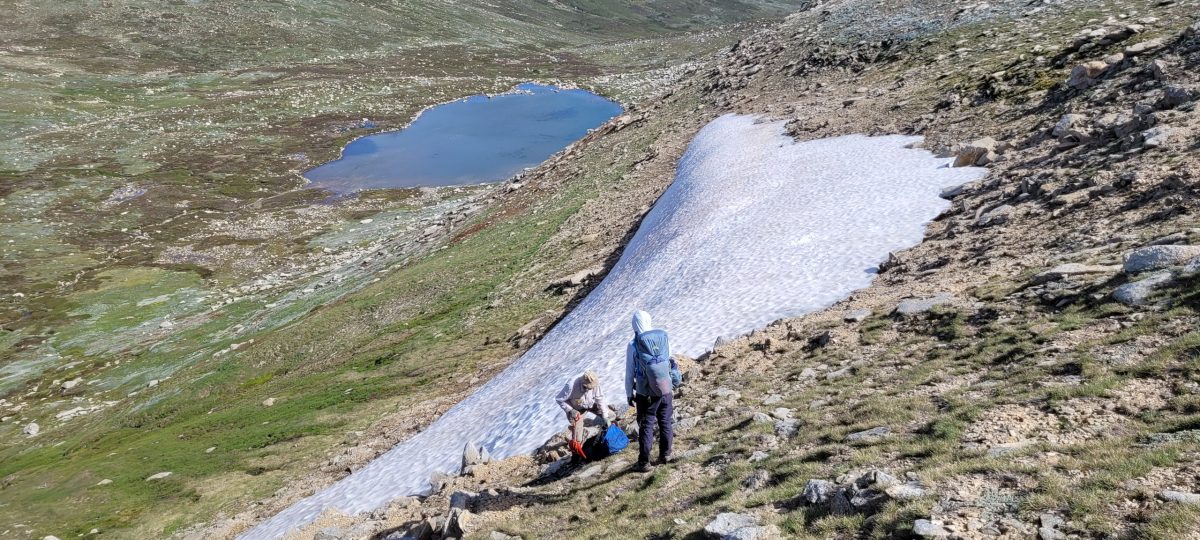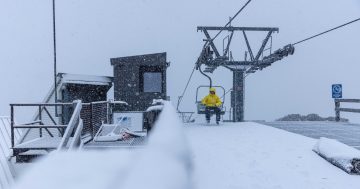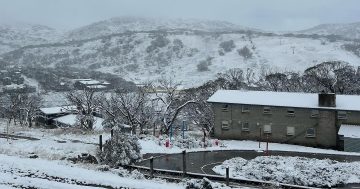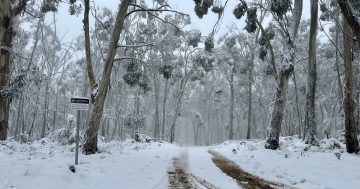
Snow patches in the Snowy Mountains have been the subject of research by Phil Campbell. Photo: University of Canberra.
Snow patches in the Snowy Mountains have survived from winter to winter for the first time in 26 years – but climate change is apparently melting them earlier.
University of Canberra researcher Phil Campbell has found that semi-perennial snow patches in Australia’s Snowy Mountains are now melting two weeks earlier than they did 45 years ago.
The semi-perennial snow patches strongly influence the rare plant communities associated with them, and subtly change the landscape in which they are located, through a range of geomorphological processes such as nivation (erosion of the ground, due to alternate freezing and thawing).
Mr Campbell said, “The patches are not really affecting any fauna, with the possible exception of micro-fauna such as invertebrates found in the meltwater, but that’s all unknown at this point.
“For the critically endangered Snowpatch Herbfield plant community however, the demise of the snow patches is a big deal.
“Using satellite data from 1978, the average melt date of the last snow patch has moved from late in the tenth, to late in the eighth week of the calendar year,” Mr Campbell said.
This year, three snow patches in the Snowy Mountains have survived from winter to winter. Once a common occurrence, this is increasingly rare and the first time in 26 years that researchers have seen this happen in Australia.
“Snow surviving until the next winter has occurred just five times since 1978, in 1987, 1992, 1993, 1997, and now in 2023. The changes we are seeing are in line with the reduction in the winter snowpack due to global warming, and a key reason the dependent Snowpatch Herbfield ecological community was listed in 2016 as critically endangered,” Mr Campbell said.
Formed from the winter accumulation of snow on the sheltered slopes of our highest mountains, snow patches are the icy remnants of the previous winter’s snow cover, often lasting well into the following summer.
Pursuing his PhD with the university’s faculty of science and technology, Mr Campbell is using a combination of satellite imagery and extensive fieldwork to investigate the semi-perennial snow patches in NSW’s Snowy Mountains.
In 1996, Australian National University Emeritus Professor Dr Ken Green, one of Mr Campbell’s doctoral supervisors, commenced an unbroken series of 27 summers scanning the mountaintops around Mt Kosciuszko, surveying 26 snow patches monthly, to record which were still visible.
“Our snow patches, and the unique Snowpatch Herbfield ecological community they support, are already at the top of our highest peaks, and in a warming world, there is nowhere for them to go – placing them at an extremely high risk of being lost forever,” Professor Green said.
“Although occupying just a few square kilometres of the vast Australian landmass, our semi-perennial snow patches are an iconic and essential part of our alpine landscape. This research will provide useful data to help preserve this unique landscape for future generations,” Mr Campbell added.
















